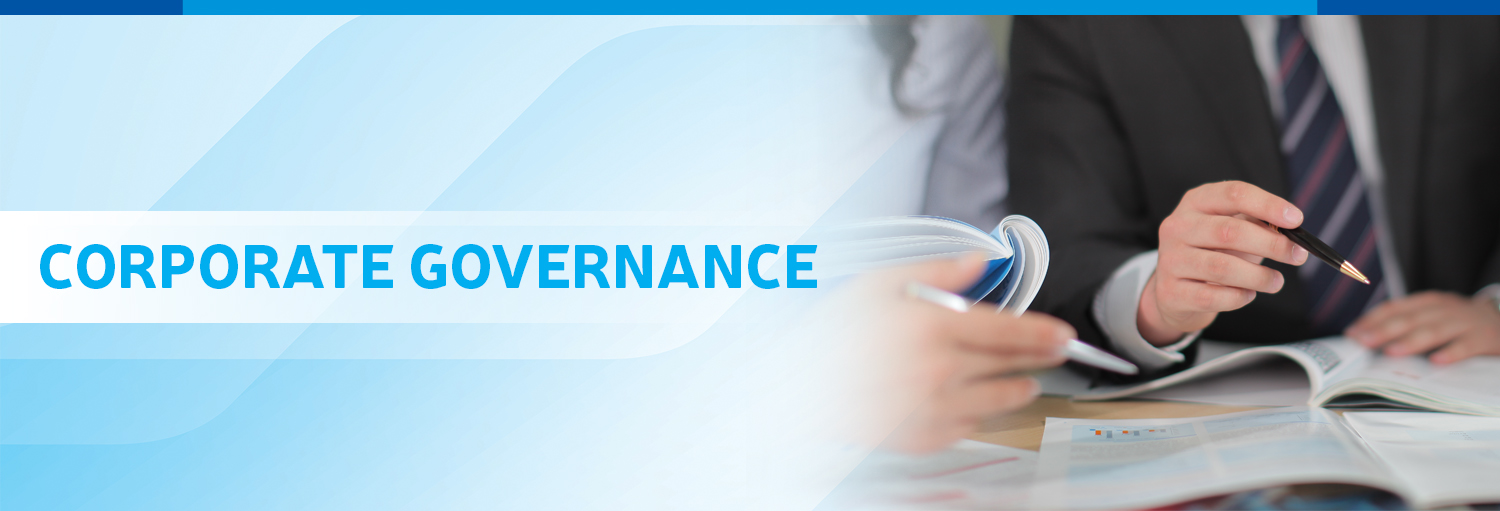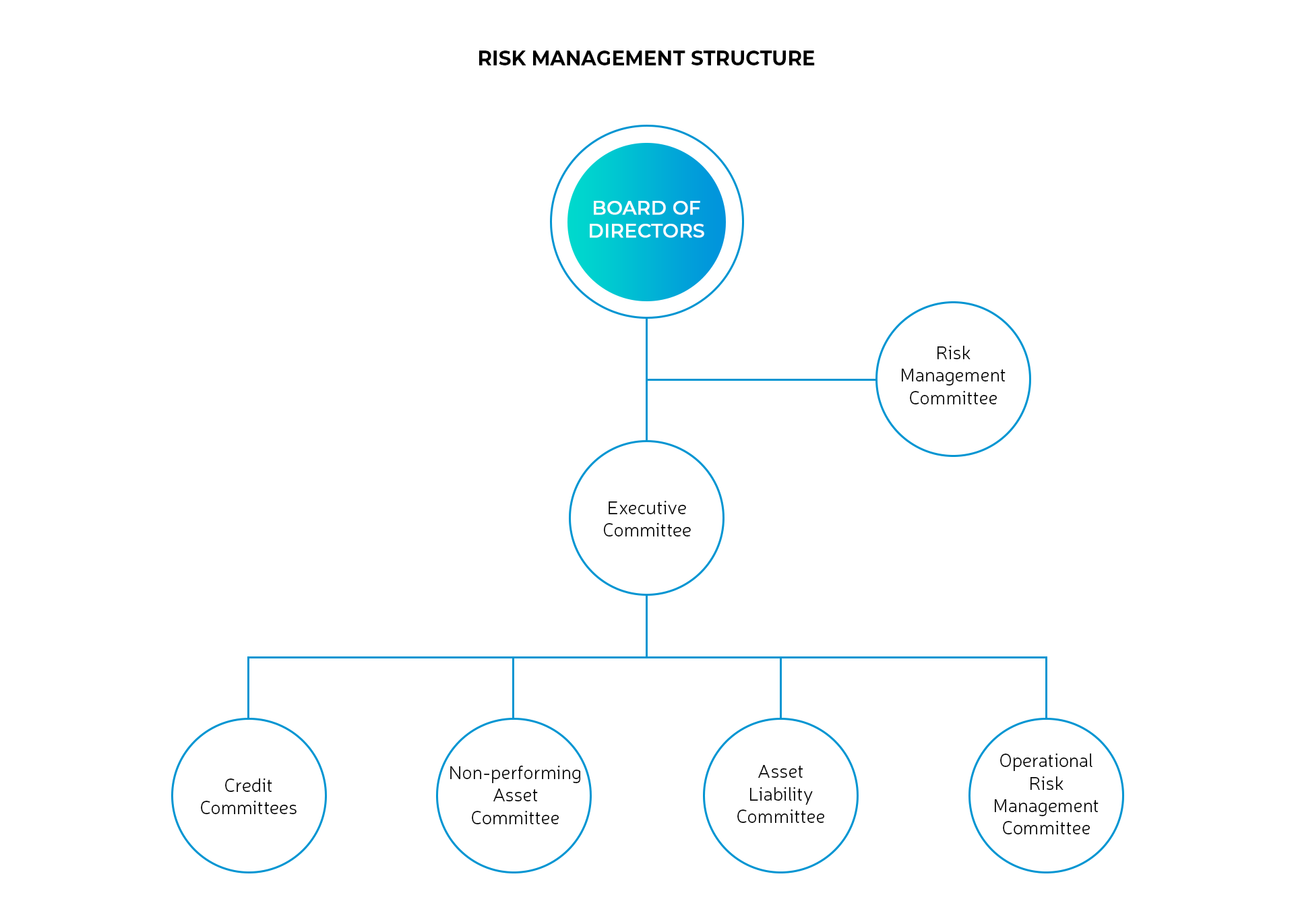


Globull Investment & Development PTE.Ltd (Globull) 60.8011%, TDB Capital LLC (TDBC) 29.6864%, Mongolia Strategic Investments Limited (Goldman Sachs) 3.1197%, and public shareholders own 6.3927%, respectively.
The Board of Directors of TDB consists: R.Koppa (Chairman), J.Bolormaa (Independent Director), J.Delgersaikhan (Independent Director), Z.Narantuya (Independent Director), D.Erdenebileg (Director), D.Khurelbaatar (Director), D.Yanjmaa (Director), A.Enkhmend (Director) and D.Otgonbileg (Director).
|
|
O.Orkhon
CEO |
R.Wood
President |
|
|
O.Banzragch First Deputy CEO |
A.Enkhmend First Deputy CEO |
L.Gantumur Deputy CEO |
Ch.Solongo Deputy CEO |
|
S.Baatar Deputy CEO |
Ts.Ganbayar Deputy CEO |
P.Munkhnast Deputy CEO |
|
Risk management policy
The purposes of Risk Management Policy are to assist the Bank in achieving strategic objectives and sustainable development, and to support Bank's profitability by managing risks in Bank's operations, and preventing and reducing them. The Bank operates in accordance with the following principles in its risk management framework.
Risk management framework
Trade and Development Bank of Mongolia fully adopts Enterprise Risk Management Framework (ERM) and applies across its operations. The ERM provides the Bank with effective mechanism for continuous monitoring and improvement of the risk environment and promotes risk awareness, knowledge, reliability, and encourages better strategic decision making. The Bank’s shareholders determine the Bank’s strategy and key strategic decisions are made from shareholders’ meeting. Risk governance, in line with the key strategic decisions, is maintained through delegation of authority to the Board of Directors (BoD) and Risk Management Committee (RMC).
The Bank’s BoD approves risk policy documents such as sound risk management framework and risk appetite statement (maximum risk that the Bank accepts). The Chief Risk Officer is responsible for day-to-day risk management, and reports directly to BoD and RMC. The Chief Risk Officer is the head of the centralised risk management function, which is the second line of ‘three lines of defense model” that the Bank implements. The centralised risk management function is run by following departments and units:
These departments and units, which are the second line of the defense model, are responsible for the Bank’s risk management processes, including daily risk monitoring, risk identification, risk assessment, risk reporting and risk mitigation.
Business units (the first line of the defense model) have responsibility for risk management within their areas of accountability, while Internal Audit Department (the third line of the defense model) provides independent assurance for effectiveness of the Bank’s risk management.

Risk Management Committee is responsible for discussing and approving the Bank’s risk management policy, risk appetite and supporting BoD by quarterly monitoring of changes in risk appetite report, and discussing how changes in the Bank's product and service types, interest rates, and commission conditions are affecting the Bank’s risk appetite. The members of RMC are directly appointed by the BoD.
Executive Committee is responsible for rationally resolving issues arising from fully implementing approved risk policies and ensuring the Bank’s operations are running smoothly in line with risk policies and approved risk appetite. The committee is composed of CEO, first deputy CEO’s and deputy CEO’s.
Credit Committees are responsible for implementing credit policies for credit activities, making decisions on new loan requests, amendments in loan conditions within their approved limits, and monitoring loan repayments and quality the Bank’s total loan portfolio.
Non-performing Asset Committee is responsible for providing management direction and support to departments and units handling the Bank’s troubled assets, determine methods to reduce non-performing loan portfolio, monitoring the quality of total loan portfolio and managing the portfolio in line with non-performing asset objectives and strategy approved by BoD.
Asset Liability Committee is responsible for overseeing the management of liquidity risk, market risk, interest rate risk, foreign exchange risk by managing the Bank’s assets and liabilities, and discussing, resolving issues arising from them.
Operational Risk Management Committee is responsible for monitoring the effectiveness of the Bank’s operational risk management policies and procedures, discussing potential risky actions and making decisions and giving management directions to manage and reduce operational risks.
The Investor Relations team of Trade and Development Bank of Mongolia will happily address any questions and requests you may have. Please contact us at (976) 11-319943 or via e-mail at [email protected].
